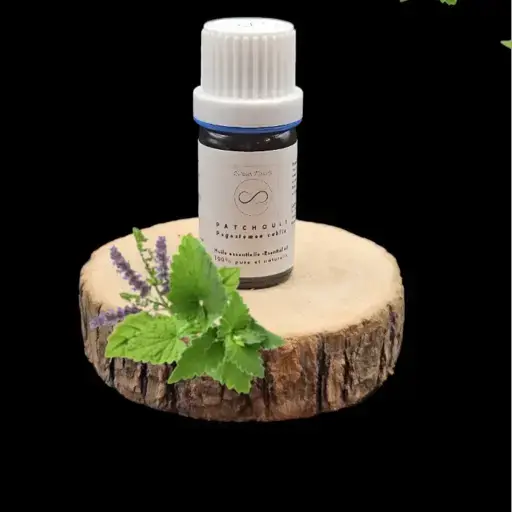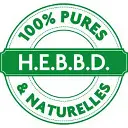Patchouli essential oil
Botanical name: Pogostemon cablin
Distilled part: Flowering plant
Botanical family: Lamiaceae
Origin: Madagascar
Chemical composition:
- Acids
-Ketones: Patchoulenone
- Monoterpenes: Alpha and Beta Pinene, Limonene
- Sesquiterpenes (40 to 45%): Alpha Bulnesene (10 to 12%), Alpha Guaiene (6 to 13%), Alpha Humulene, Beta Bulnesene (14%), Beta Caryophyllene, Beta Elemene, Beta Gayene, Delta Cadinene, Patchoulene
- Sesquiterpenols: Patchoulol (35 to 40%)
Hazard: At high doses: sedative, see narcotic
External use only
Miscellaneous: Powerful inhibitor of intrusive thoughts
Legend: * powerful,** very powerful;*** extremely powerful (power value for the associated pathology)
PHYSICAL PROPERTIES AND THERAPEUTIC INDICATIONS:
Acne*
Anti-inflammatory
Antiputrid
Antiseptic
Aphrodisiac
Crevasse
Decongestant
Allergic dermatosis
Inflammatory dermatosis
Seborrheic eczema*
Bed sore
Febrifuge
Fungicide
Frigidity
External hemorrhoids*
Internal hemorrhoids*
Herpes
Impetigo
Insect repellent (moths)
Viper bite
Parasitosis
Phlebotonics*
Tissue regenerator
Digestive stimulant
Varicose veins*
Hair care
EMOTIONAL, PSYCHIC PROPERTIES AND THERAPEUTIC INDICATIONS:
Anxiolytic
Confusion
Overwork
HE intended for serious enthusiasts; “controlled characters” should avoid it.
PSYCHIC PROPERTIES AND THERAPEUTIC INDICATIONS:
Anguish
Concentration (favors)
Depression
Rooted
Nervous exhaustion
Balancing
Nervous fatigue
At low doses: *Powerful inhibitor of intrusive thoughts*
Nervous stimulant
HE for meditation
Reference and bibliographic source: Lily BAYER and Dr Hervé STAUB, (2013) “In-depth treatise on Phyto and Aromatherapy”, Ed. Grancher. p. 611.
INDICATIONS IN AROMATHERAPY AND THE USE OF ESSENTIAL OILS DO NOT CONSTITUTE A MEDICAL DIAGNOSIS AND DO NOT REPLACE THE ADVICE OF A DOCTOR OR MEDICAL TREATMENT!





